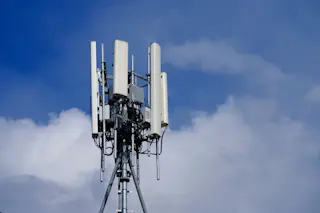The shortest route between two points is a straight line.But if you manage to get on a flight these days, you’ll probably end up zigzagging across the skies.That’s because the radar-based navigation system used by airlines, developed more than 50 years ago, limits air traffic to a grid of narrow highways—meaning that planes have to wait in a single-file queue for their turn to take off.So it’s a good thing the FAA is proposing a new satellite-based GPS navigation system, called NextGen, that would let pilots fly shorter routes—and use less fuel.
NextGen would let pilots determine their own position and the position of other flights, potentially shifting flight patterns.The current radar system takes 10 seconds to scan an area, so planes have to be kept extra far apart. Supporters of NextGen say it would allow more planes in the air while reducing accidents and delays—while also saving 3.3 billion ...













